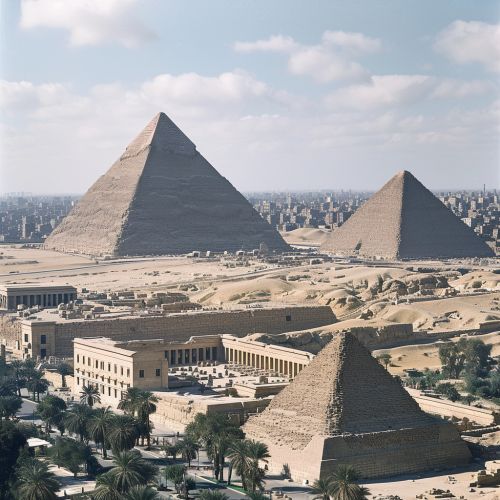Egyptian Empire
Ancient Egyptian Empire
The Egyptian Empire is one of the most influential civilizations in the history of the world. Spanning over three millennia, it was the preeminent civilization in the Mediterranean world. From the great pyramids of the Old Kingdom through the military conquests of the New Kingdom, Egypt's majesty has long entranced archaeologists and historians and created a vibrant field of study known as Egyptology.


Geography and Climate
Egypt's geography was an integral part of its statehood. Its isolation and protective barriers contributed to its ability to sustain a lasting and enduring civilization. The Nile River, the longest river in the world, was the lifeblood of the Egyptian Empire, providing a vital waterway for trade and commerce. The fertile floodplain of the Nile gave humans the opportunity to develop a settled agricultural economy and a more sophisticated, centralized society that became a cornerstone in the history of human civilization.
History
Predynastic and Early Dynastic Periods
The Predynastic Period in Egypt is the time before recorded history from the Paleolithic to the Neolithic Age and on to the rise of the First Dynasty. The Predynastic Period is generally recognized to have concluded with the founding of the First Dynasty around 3100 BC. The Early Dynastic Period began with the unification of Upper and Lower Egypt under the rule of the first pharaoh, Narmer.
Old Kingdom
The Old Kingdom is most commonly regarded as the period from the Third Dynasty through to the Sixth Dynasty (2686–2181 BC). Egypt reached its pinnacle during the Fourth Dynasty, which began with Sneferu (2613–2589 BC). Using a greater mass of stones than any other pharaoh, he built three pyramids: a now collapsed pyramid in Meidum, the Bent Pyramid at Dahshur, and the Red Pyramid, at North Dahshur.
Middle Kingdom
The Middle Kingdom, the period from the end of the Old Kingdom to the start of the New Kingdom, was a time of political and cultural rejuvenation after the collapse of the Old Kingdom. It is often considered Egypt's classical age, during which the culture produced some of its most famous works of art and literature.
New Kingdom
The New Kingdom saw Egypt attempt to create a buffer against the Levant and attain its greatest territorial extent. It is noted for its military strength and for its numerous wars with neighboring states. The period is known for some of the most well-known pharaohs, including Hatshepsut, Thutmose III, Akhenaten and his wife Nefertiti, Tutankhamun, and Ramesses II.
Society
Egyptian society was highly stratified, and social status was expressly displayed. Farmers made up the bulk of the population, but agricultural produce was owned directly by the state, temple, or noble family that owned the land. Artists and craftsmen were of higher status than farmers, but they were also under state control, working in the shops attached to the temples and paid directly from the state treasury.
Religion
The religion of ancient Egypt was a complex system of polytheistic beliefs and rituals that formed an integral part of ancient Egyptian society. It centered on the Egyptians' interaction with many deities believed to be present in, and in control of, the world. Rituals such as prayers and offerings were efforts to provide for the gods and gain their favor.
Legacy
The culture and monuments of ancient Egypt have left a lasting legacy on the world. The cult of the goddess Isis, for example, became popular in the Roman Empire, as obelisks and other relics were transported back to Rome. The Romans also were appreciative of Egyptian culture and, wanting to emulate their power and success, constructed temples and buildings in the Egyptian style.
